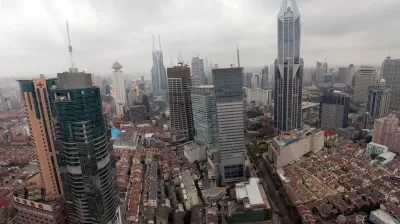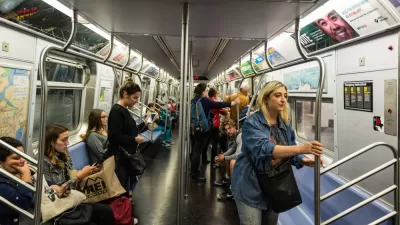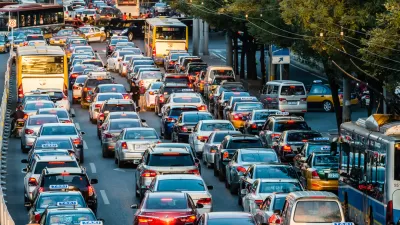In top-tier Chinese cities like Shanghai and Beijing, new population caps have spurred the relocation of residents, many of them low-income, to smaller cities and the outskirts.

In a set of policies that might be described as forced gentrification, Helen Roxburgh writes, "tier one" Chinese cities like Shanghai and Beijing are demolishing older neighborhoods and relocating residents elsewhere.
On one hand, the relocations have been prompted by what the government calls the ills of overcrowding, pollution among them. "As a result, both Shanghai and Beijing, the Chinese capital, implemented population caps last year, leaving little room for additional growth – Shanghai plans to limit the population to 25 million, Beijing to 23 million."
But the relocations are also part of China's speedy push to develop, for which cities like Shanghai serve as showpieces. "Ongoing efforts to 'beautify' both cities have included rebuilding grittier districts, rounding up street vendors, closing or moving hundreds of markets and bricking up restaurants, bars and shops without licences."
While low-income residents are bearing the brunt of the policy, the government hopes to populate new urban areas, many of them vacant, that have sprung up on the outskirts of cities. "However, there will always be demand for lower-skilled jobs and services, experts say, so efforts to push migrant workers out of the city are instead likely to add new problems."
FULL STORY: China's radical plan to limit the populations of Beijing and Shanghai

Alabama: Trump Terminates Settlements for Black Communities Harmed By Raw Sewage
Trump deemed the landmark civil rights agreement “illegal DEI and environmental justice policy.”

Study: Maui’s Plan to Convert Vacation Rentals to Long-Term Housing Could Cause Nearly $1 Billion Economic Loss
The plan would reduce visitor accommodation by 25% resulting in 1,900 jobs lost.

Planetizen Federal Action Tracker
A weekly monitor of how Trump’s orders and actions are impacting planners and planning in America.

Wind Energy on the Rise Despite Federal Policy Reversal
The Trump administration is revoking federal support for renewable energy, but demand for new projects continues unabated.

Passengers Flock to Caltrain After Electrification
The new electric trains are running faster and more reliably, leading to strong ridership growth on the Bay Area rail system.

Texas Churches Rally Behind ‘Yes in God’s Back Yard’ Legislation
Religious leaders want the state to reduce zoning regulations to streamline leasing church-owned land to housing developers.
Urban Design for Planners 1: Software Tools
This six-course series explores essential urban design concepts using open source software and equips planners with the tools they need to participate fully in the urban design process.
Planning for Universal Design
Learn the tools for implementing Universal Design in planning regulations.
Caltrans
Smith Gee Studio
Institute for Housing and Urban Development Studies (IHS)
City of Grandview
Harvard GSD Executive Education
Toledo-Lucas County Plan Commissions
Salt Lake City
NYU Wagner Graduate School of Public Service





























